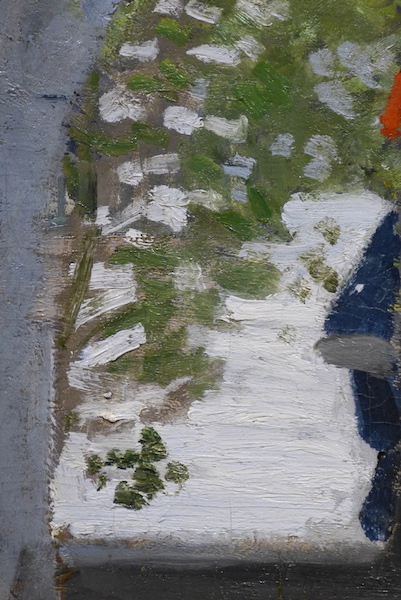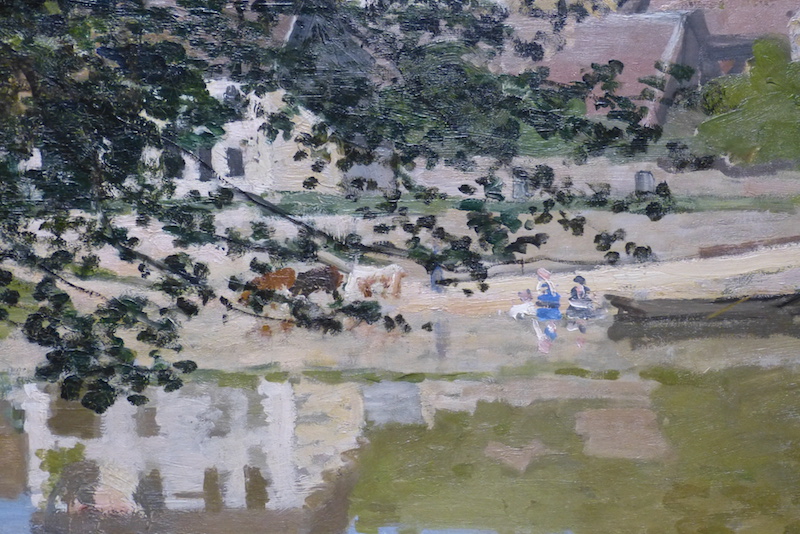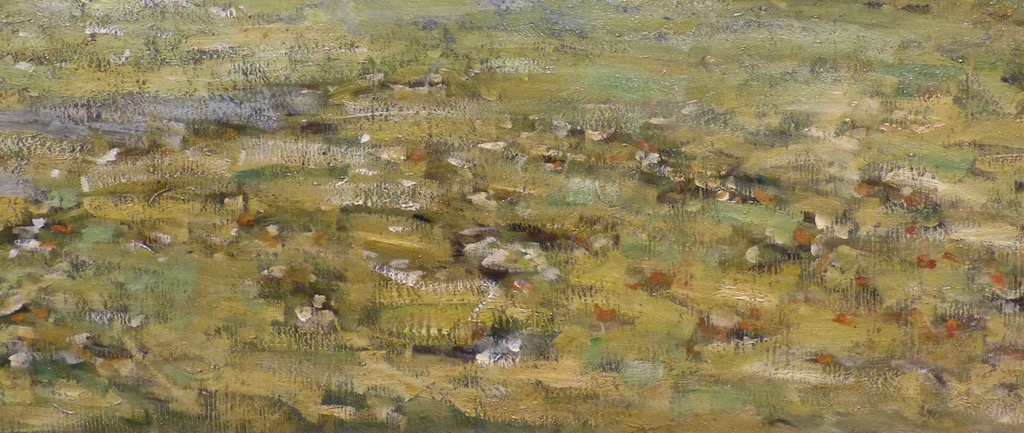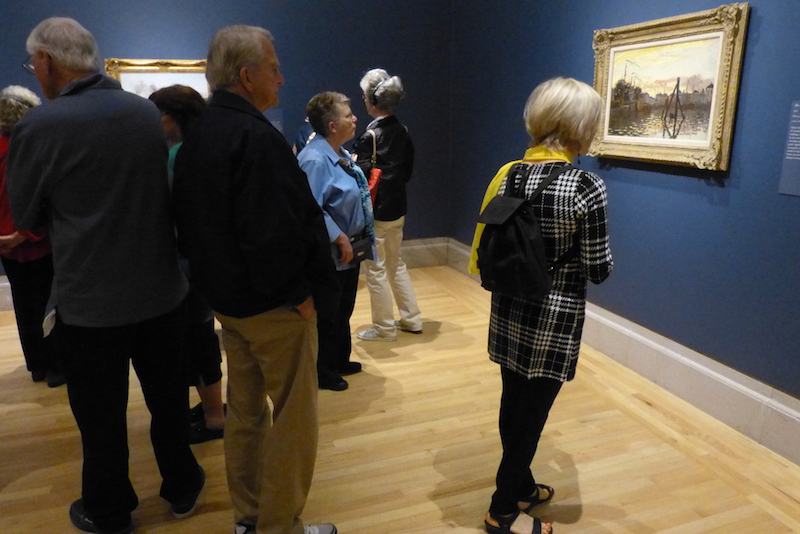Monet’s strong beginning (Claude Monet, 1840-1926)
The show at the Legion of Honor in San Francisco, “Monet: the Early Years”, is full of surprises.
The first surprise isn’t how wonderful the wonderful stuff is, but how many middling pieces there are–things you wouldn’t pay much attention to if the artist’s fame hadn’t made you think you’d better admire anyway. Even geniuses, it seems, put their pants on one leg at a time.
But the wonderful stuff predominates, and really is wonderful. Most of the work in the show will be familiar to anyone who has looked at a history of the Impressionists, but as is usually the case with strong paintings, seeing the work in the flesh reveals subtleties that don’t come across in reproductions. For example, how bold his attack is, and how undisguised.
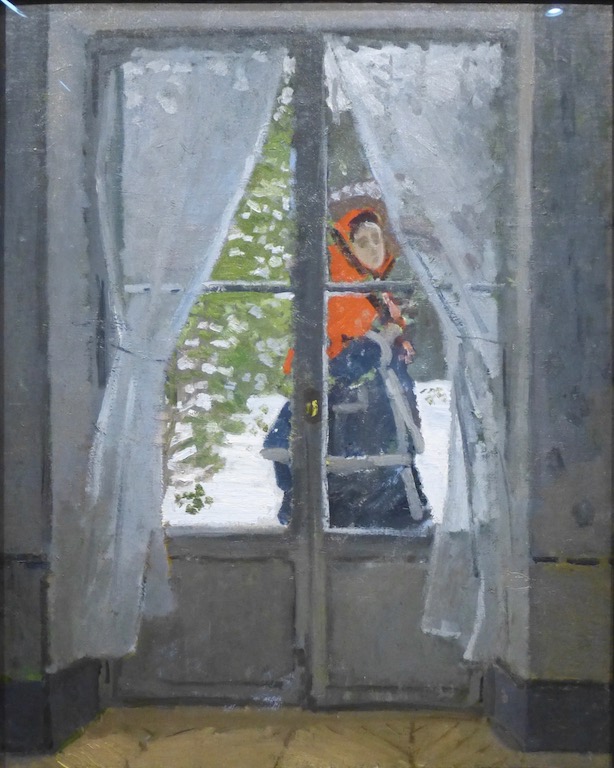
The Red Kerchief is on a gray ground, visible here and there. The strokes and dabs are thick, wet, and knowing. It was done in more than one session, but the overpainting never muddles the first layin, although there are second thoughts: he seems to have found that white shape at the bottom boring, so he added that little cluster of leaves with a smaller brush and slightly off green.
And so with other pieces. Check out the brights in the detail of Le déjeuner sur l’herbe below: the flashes of light on the plate by the hand, on the fruit, and how frankly and improbably but convincingly the gray plate to the left is defined by the white area that lies against it but doesn’t trespass. Monet wasn’t passively jotting down “impressions”, he was constructing. And that hand–so deftly minimal!
This frontal attack doesn’t always work as well as it might. Sometimes, as in the detail of The River-Bannecourt below, the effect is merely slapdash. Apparently, the foreground needed punching up, so he drybrushed on more foliage until he got the balance he wanted. It’s a strong compositional choice, and from a few feet away it works, but when you come in close enough to take in the details it’s coarse and messy rather than daring and strategic. The background shapes are reduced to left-over bits and pieces. His stronger stuff (as in The Red Kerchief or the déjeuner) works the nearer and farther shapes together, side by side.
But generally, he’s on top of it. Here a glorious foreground, full of strokes and dabs of fluid paint with later, drybrushed augmentation.
He was in his twenties when he did these things. I mean, my goodness! And they were only the beginning.
___________________
Before ending this post I must mention the good manners of Monet’s enthusiasts. There were lots of people at the show. This snap is a typical view, if leaning a trifle on the elder side. What’s remarkable about it is that people aren’t crowding the pictures, or stepping in front of each other, or blocking views. They maneuver carefully around each other, working in slowly, taking turns. In a hot show, how often do you have that experience?
